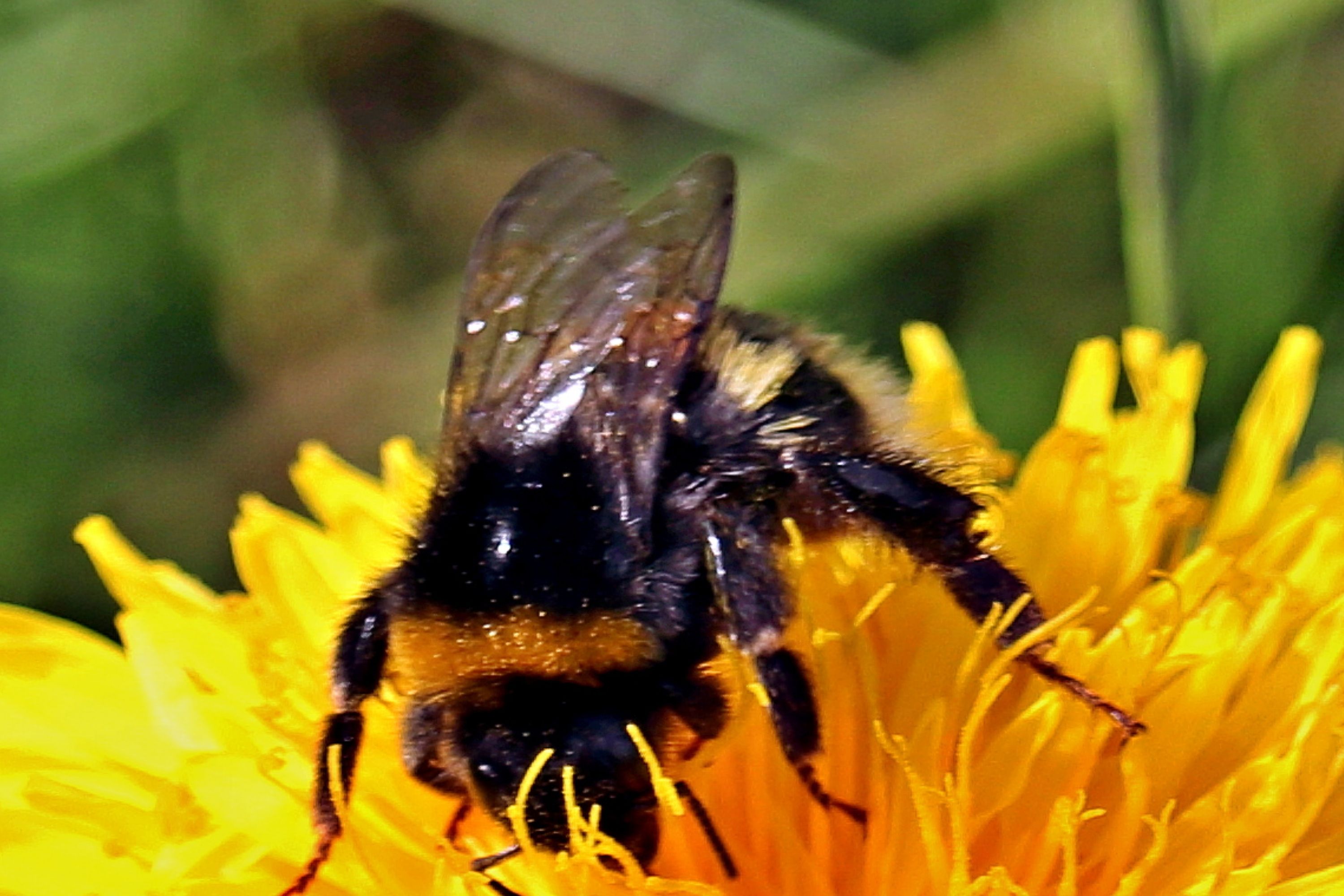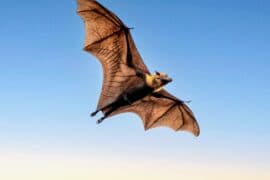Early bumblebee
(Bombus pratorum)

Description
The early bumblebee or early-nesting bumblebee (Bombus pratorum) is a small bumblebee with a wide distribution in most of Europe and parts of Asia. It is very commonly found in the UK and emerges to begin its colony cycle as soon as February which is earlier than most other species, hence its common name. There is even some evidence that the early bumblebee may be able to go through two colony cycles in a year. Like other bumblebees, Bombus pratorum lives in colonies with queen and worker castes. Bombus pratorum queens use aggressive behavior rather than pheromones to maintain dominance over the workers. The queen is black with a yellow collar (the band around the front of the thorax), another yellow band on the first tergite (abdominal segment), and red colouration on the tail (terga 5 and 6). The male has a wider yellow collar, yellow colouration on both terga 1 and 2, and a red tail, also. The workers are similar to the queen, but often with less yellow colouration; usually the abdominal, yellow band is more or less missing. The head of the bumblebee is rounded, and the proboscis is short. The bumblebee is quite small; the queen has a body length of 15–17 mm (0.59–0.67 in), the worker 10–14 mm (0.39–0.55 in), and the male 11–13 mm (0.43–0.51 in). Shortly after their emergence, workers can be distinguished by a silvery color before quickly changing to the normal colors of the foraging bees (a similar appearance to the queen with the middle yellow band missing). B. pratorum is found in most of Europe, from the Arctic to the Mediterranean. It is, however, uncommon in the south of the Iberian Peninsula, Italy, and the Balkans. On the steppes of southern Russia and Ukraine, it is totally absent. In Asia, it is found in the mountains of northern Turkey, northern Iran, and uncommonly in Siberia west of the Yenisei River. It is common in most of the mainland United Kingdom, but less so in north-west of Scotland. It is absent from most Scottish islands, Orkney, and Shetland. Its preferred habitat is very wide-ranging, including fields, parks, scrubland, and sparse forest. B. pratorum build nests above ground, and especially in the UK, are known to utilize bird nests or abandoned rodent nests for their own nesting sites.
Taxonomic tree:







